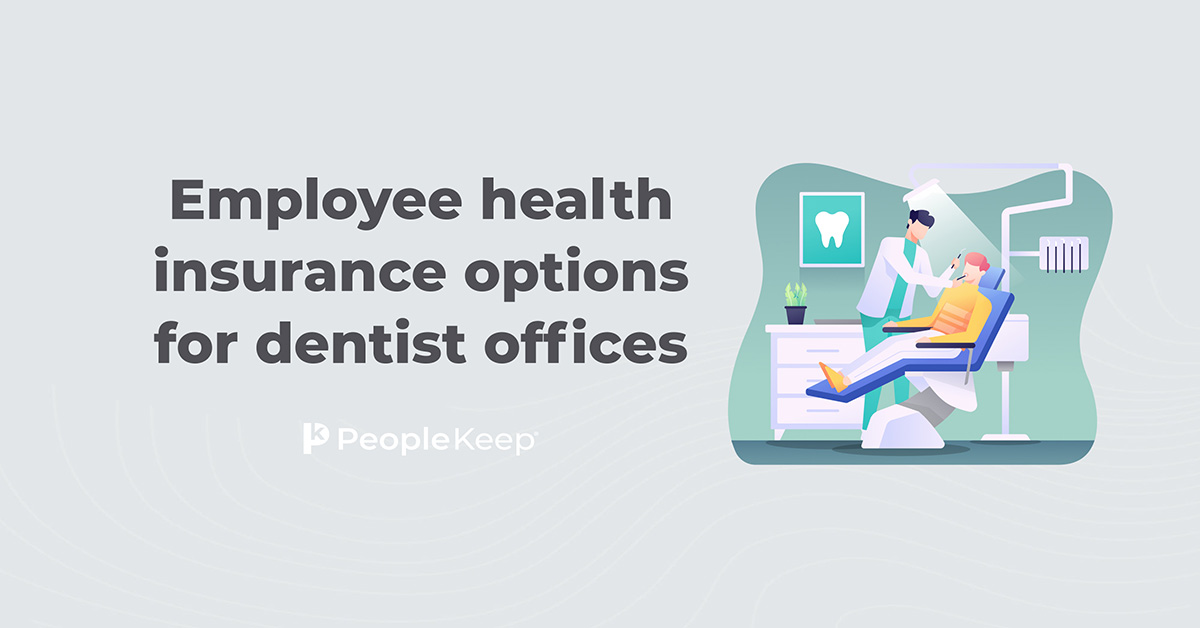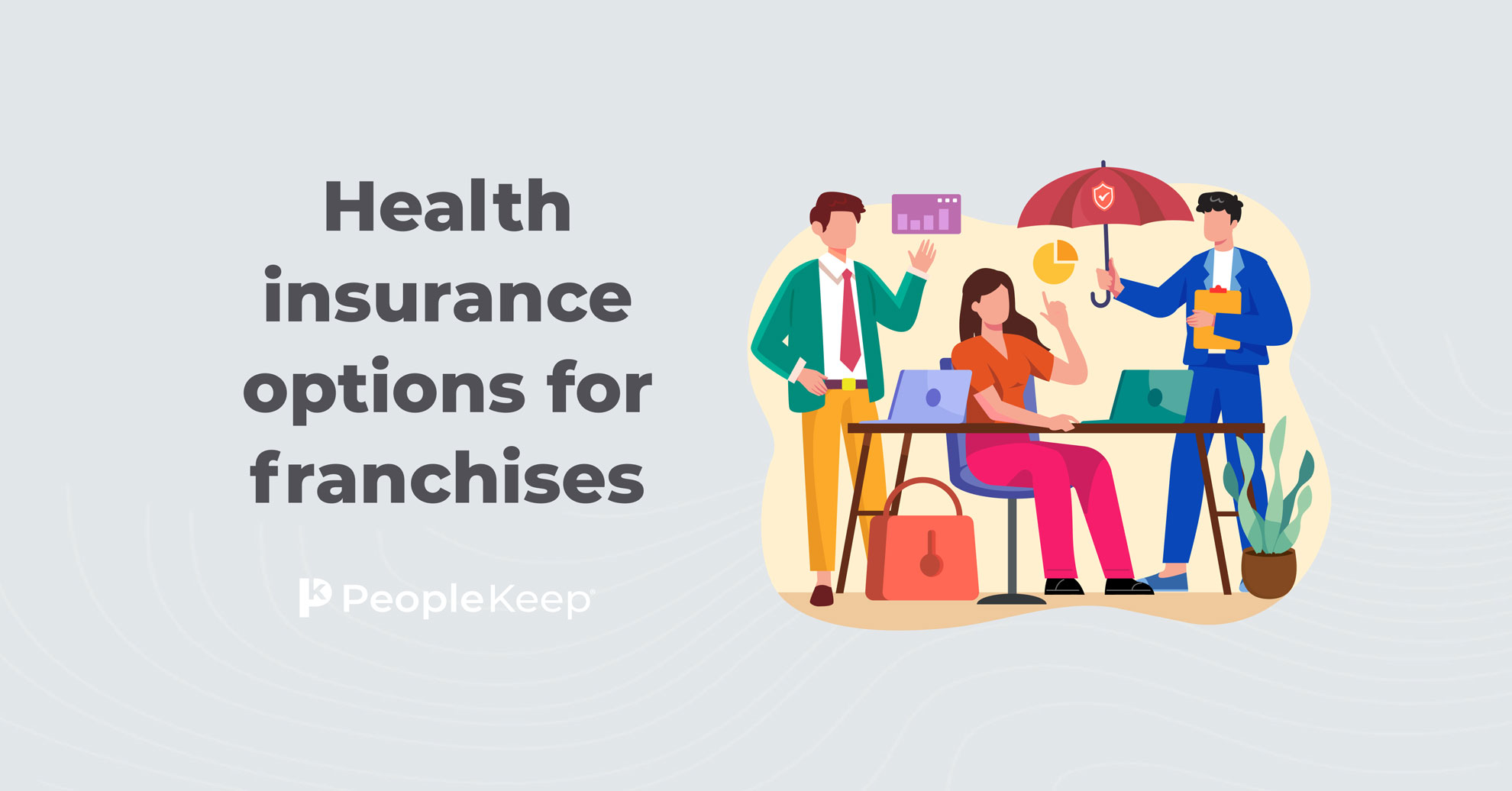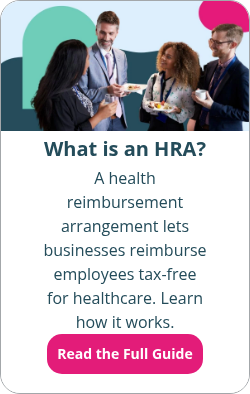Health insurance for restaurants and food service employees
By Elizabeth Walker on July 17, 2024 at 8:38 AM
There were 749,404 restaurants in the U.S. in 20231. By the end of 2024, the National Restaurant Association projects there will be 15.7 million workers in the food service industry2. However, many of these restaurants are small businesses with tight budgets. According to the National Restaurant Association, 98% of restaurant owners struggle with higher labor costs, and 45% need more employees.
One way you can address this challenge is by offering a robust health benefit. While the Affordable Care Act (ACA) only requires organizations with 50 or more full-time equivalent employees (FTEs) to offer health insurance. But, by providing a health benefit, small restaurant owners can help you boost your retention rate, improve company culture, and increase morale. Plus, there are many comprehensive health insurance options you can offer your staff without blowing your budget.
In this article, we’ll review health insurance benefits for restaurants that will help your business thrive and satisfy your food service employees.
Takeaways from this blog post:
- Traditional group health insurance is a popular benefit option for restaurant owners. However, group insurance plans have steep annual rate increases, limited plan options, and minimum participation requirements.
- Health reimbursement arrangements (HRAs) are a tax-free health benefit option for restaurant owners and food service workers. HRAs allow employers to reimburse employees for health insurance premiums and medical expenses tax-free.
- Additional benefits include association health plans, which allow small businesses in the food service industry to pool resources with other companies, and taxable health and wellness stipends.
Traditional group health insurance
Traditional group health insurance covers almost 153 million U.S. workers and is among the most popular health benefit options. With this plan, employers choose their company’s group health policy, and employees enroll at a reduced cost. You can buy a group plan policy through an insurance company, agent, or broker.
Many applicable large employers (ALEs) often opt for a group health insurance plan because they qualify for lower rates and can meet the participation requirements. However, in some states, smaller companies can buy small group health insurance on the Small Business Health Options (SHOP) marketplace3. They can even save on premiums if they qualify for the Small Business Health Care Tax Credit.
Here are some popular types of group health plans:
- Preferred provider organization (PPO): With a PPO plan, employees use a network of preferred doctors and hospitals to receive healthcare at a discounted rate. These plans don’t usually require employees to choose a primary care physician (PCP).
- Health maintenance organization (HMO): An HMO plan typically requires employees to choose a PCP and receive a referral to see a specialist.
- Point of service (POS): Like an HMO, employees must choose a PCP from their network before receiving healthcare. PCPs coordinate with specialists to provide integrated medical care for their patients.
- Exclusive provider organization (EPO): EPO plans require employees to use in-network doctors, except in emergencies. PCPs make referrals to specialists, like POS and HMO plans.
Group medical insurance gives many employers peace of mind because of its familiarity and extensive network of providers. However, it often comes with limited plan details, steep annual rate increases, and may only meet some employees’ needs.
If you want to offer a group plan while providing your employees more flexibility, you can supplement it with other health benefits, like the three we’ll mention in the chart below.
|
Benefit |
|||
|
What is it? |
A GCHRA is an employer-owned benefit that allows you to reimburse your employees tax-free for out-of-pocket medical costs that your group plan doesn’t cover. HRA funds stay with you when employees leave your company. |
HSAs are employee accounts that allow for tax-free payment or reimbursement of eligible out-of-pocket costs listed in IRC 213(d), except for insurance premiums. If employees leave your company, they keep their HSA and all the unused funds. |
Healthcare FSAs are employer-owned benefit plans that allow for tax-free reimbursement or payment of qualified medical expenses. The FSA stays with you when employees leave your company. |
|
What are the eligibility requirements? |
Only employees enrolled in their employer’s group health plan can participate. |
Employees must have an HSA-qualified high deductible health plan to be eligible. |
Eligible employees must have group insurance to use a healthcare FSA. |
|
What are the annual contribution amounts? |
There are no minimum or maximum contribution limits. Only the employer can contribute to a GCHRA. |
The 2026 IRS annual contribution limit is $4,400 for self-only coverage and $8,750 for family coverage. Anyone, including the employee and employer, can contribute to the account. |
Employers determine their contribution amounts but can’t exceed the IRS annual limit of $3,400 in 2026. The employee and employer can both contribute to the FSA. |
Association health plans
The second option is an association health plan (AHP). AHPs allow small businesses with fewer than 50 employees and self-employed workers to come together as one larger group to buy group healthcare coverage. Typically, AHPs join organizations within the same industry, profession, or region, such as many restaurants in the same area.
AHPs are similar to traditional health insurance. They can cover a wide range of employees, including part-time and 1099 workers, making it more flexible for all your restaurant workers to have coverage. But, AHPs don’t have to comply with many ACA requirements. For instance, they don’t have to cover all the essential health benefits and can charge higher premiums based on gender. So, your employees may not find this benefit as attractive as others.
While AHPs are typically more affordable than traditional health insurance, the next health benefit we’ll discuss provides more flexibility, helps you meet ACA regulations, and covers a broader range of medical services.
Health reimbursement arrangements (HRAs)
One of the best options for restaurant owners is a stand-alone health reimbursement arrangement (HRA). An HRA is a tax-free health benefit that you can use to reimburse your staff for individual health insurance premiums and qualified out-of-pocket medical expenses. IRS Publication 502 and the CARES Act have a complete list of healthcare expenses for HRAs4.
HRAs are an excellent option for restaurants of all sizes, locations, and budgets. With an HRA, you set a monthly allowance that your workers can spend on medical care. Once employees make an approved purchase, you reimburse them tax-free up to their allowance amount.
Because of their flexibility, opting for an HRA instead of employer-sponsored health insurance is a great way to attract quality restaurant staff.
There are two stand-alone HRAs that you can use as your health benefit: the qualified small employer HRA (QSEHRA) and the individual coverage HRA (ICHRA).
Let’s take a look at how they compare in the chart below.
|
ICHRA |
QSEHRA |
|
|
What is it? |
The ICHRA is for organizations of any size. Depending on how the employer designs the benefit, the ICHRA may satisfy the employer mandate for ALEs. |
The QSEHRA is for small employers with fewer than 50 full-time FTEs that don't offer a group plan. |
|
Who is eligible? |
Employees must have a qualifying form of individual health insurance to participate. |
All full-time employees are automatically eligible. Part-time employees can also participate. Employers must provide them with the same allowance amount as full-time workers. In either case, all employees must have a healthcare plan that provides minimum essential coverage (MEC) to participate. |
|
Are there customization options? |
The business can structure eligibility guidelines based on 11 employee classes, like full-time or part-time status. |
Employers can reimburse individual health plan premiums, out-of-pocket medical expenses, or both. |
|
What are the annual contribution amounts? |
There are no minimum or maximum contribution limits. |
QSEHRAs have the following annual contribution limits for 2026:
|
|
Can they coordinate with premium tax credits? |
If employees qualify for premium tax credits, they must choose between their ICHRA benefit and the subsidy based on affordability. If their ICHRA allowance is affordable, employees should opt into the benefit and waive their premium tax credits. But, if it's not affordable, they can opt out of the ICHRA and collect their credits. |
If an employee’s QSEHRA allowance is affordable, they must waive their tax credits. But, if it’s unaffordable, they can keep the QSEHRA and their tax credits. However, they must reduce their subsidy by the amount of the QSEHRA benefit allowance. |
Health stipends
The last option for restaurant owners is a health or wellness stipend. Using a health stipend, you can offer your employees a set amount of money to pay for health insurance premiums and other additional costs, like prescription drugs and emergency services.
Health stipends aren’t considered formal health benefits, which means employers have more flexibility over how they’re offered or designed. For instance, they can be offered alongside formal health benefits like group health insurance, AHPs, and HRAs. They don’t have contribution minimums or limits and can even be offered to 1099 workers.
However, health stipends don’t satisfy the ACA’s employer mandate if your restaurant is an ALE. They’re also considered taxable income by the IRS. This means you’re subject to payroll taxes, and your employees must pay income taxes on any stipends received during tax season.
Conclusion
The food service industry is one of the largest in the country. Finding and retaining talented workers at your restaurant can be challenging. But by offering a robust compensation package with high-quality health benefits, you’ll make the first step toward attracting a team of talented restaurant staff and keeping your employee turnover rate low.
If you’re struggling to find the right employee benefits for your restaurant, PeopleKeep can help. With our HRA administration software, you can provide your staff with customized and flexible health benefits that will support everyone’s needs. Contact a PeopleKeep HRA specialist to learn how we can help your restaurant thrive.
1. https://helplama.com/restaurant-industry-statistics/
2. https://restaurant.org/research-and-media/research/research-reports/state-of-the-industry/
3. https://www.healthcare.gov/small-businesses/choose-and-enroll/shop-marketplace-overview/
Check out more resources
See these related articles

Employee health insurance options for dentist offices
Finding the right health benefit for your dental practice is essential. Discover the different health insurance options tailored for dental professionals.

Health insurance options for franchises
Are you a franchise owner? Explore your health insurance options with this comprehensive guide, tailored specifically for franchises.

Health insurance for employees in multiple states
This blog shows you four ways to offer a health benefit to your employees in multiple states so you can support your workers regardless of their location.



